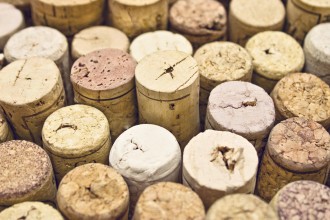Some Crazy Shit Happened a Million Years Ago…Now it’s in Your Wine Glass!
So last time, we nerded out about some geological events from a Million years ago. Now we’re getting to the fun part: the effect the different soil types have on the way wine actually TASTES! We can now narrow all this geeky information into three major soil types: Marine Sedimentary, Volcanic and Windblown. So you’ve flown into Portland, and are cruising in your rental car towards the Valley, rockin’ your favorite tunes. As you drive down 99 into wine country, you might first happen across the Chehalem Mountains AVA (an AVA is a fancy abbreviation for a wine-growing area). This area is home to some 1100 acres of grapes and all different soil types! It is also home to Bald Peak, the highest peak in the Willamette Valley. Soils on the southern and western slope are volcanic and sedimentary. Soils on the north face are windblown. That makes the Chehalem AVA very hard to generalize; crack open a Pinot from the north face (windblown), and you’ll probably pick up on some more edgy spicy notes- Asian Five spice, licorice and briary fruits. Southern and western slopes, including Ribbon Ridge (mostly sedimentary), are more likely to wow you with black & blue fruit, fresh earth and wonderful acid retention.
Drive a bit further South, and you’ll come to the Dundee Hills AVA. Dundee Hills soils are rich and reddish, almost exclusively volcanic. Volcanic soil is known to produce wines that will have your nose reveling in beautiful high tones of red and blue fruits (cranberry, strawberry, blueberry). Perfumey, with a background of cola, earthy spice and accents of lavender, black tea, and other savory spices. Pure and soft, these are the Pinots that are sometimes deceptively light in color, yet bowl you over with elegant layers.
Continue down 99, and then jump up onto 47 and you’ll soon find yourself in the Yamhill-Carlton AVA. This area contains some of the oldest marine sedimentary soil in the Valley. Wines from Yamhill-Carlton enjoy bigger, heavier tannins that come from the sedimentary soil. Yamhill-Carlton soils also benefit from quick drainage (i.e., any rain that falls drains through the soil faster, forcing the roots to dig deeper for water). That, combined with a rain shadow from the Coastal range, and Yamhill-Carlton’s Pinots are often some of the lushest, chewiest, ripest you will find in Willamette. All the fruit you love in a Pinot Noir, accentuated with notes of sweet tobacco, espresso, cloves, pepper and even dark chocolate and anise. Wowza!
We’ve gone on here at some length, and this isn’t even ALL the AVA’s in Willamette Valley. And this is just ONE corner of the world! AND we only talked about ONE grape! Does this not boggle your mind?! It does mine. I went to Oregon over a year ago, and I’m still processing all the soil types and having fun exploring what they mean. When you take into account the different growing conditions and microclimates that come along with each vintage… it makes you realize just how much goes into one single bottle of wine.
[mc4wp_form id=”7199″]


